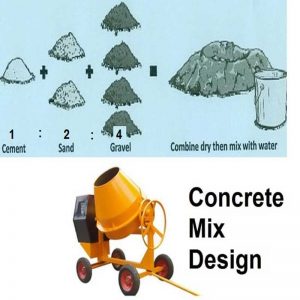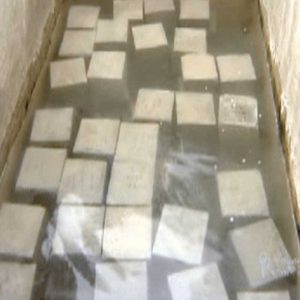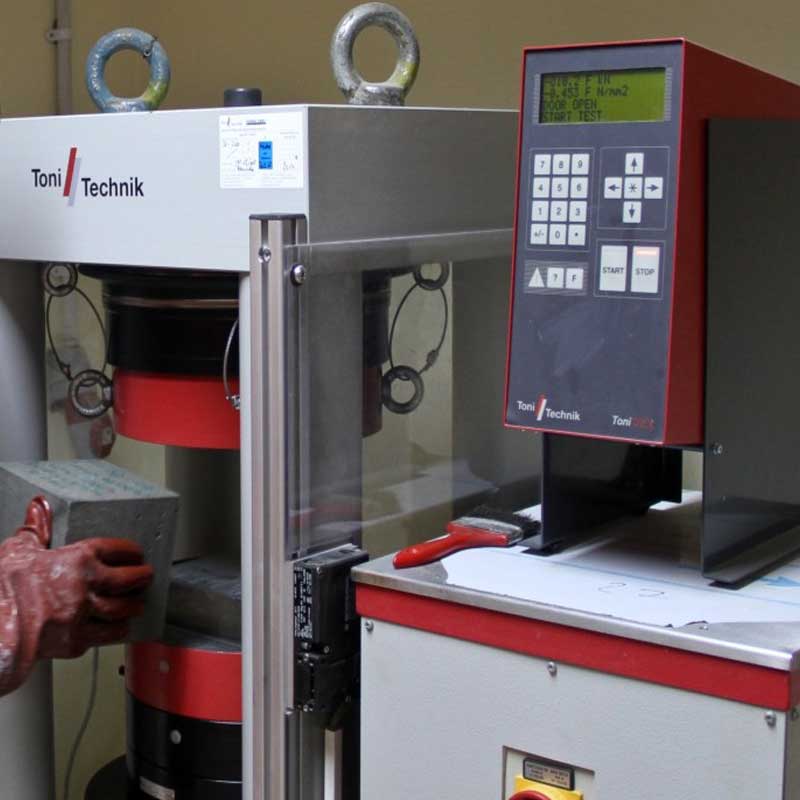How To Determine Concrete Mix Ratio In Relation To The Number Of Head Pans Of Sands And Gravels That Is Actually Needed For A Bag Of Cement.
 In a bid to understand how to determine concrete mix ratio in relation to the number of head pans of sands and gravels that is actually needed for a bag of cement.
In a bid to understand how to determine concrete mix ratio in relation to the number of head pans of sands and gravels that is actually needed for a bag of cement.
Concrete mix ratio is widely use by civil engineers to define the relationship between cement, sands and gravels.
Over the years concrete mix ratio have being use by many civil engineering authors to mean the quantity of cement in relation to the quantity of sands and gravel that will result in maximum strength at a particular period of time usually 28 days.
Having this in mind it therefore means that care must be taking when deciding the concrete mix ratio to use at construction site and how to convert it into bags for cement and head pans for sands and gravels.
To understand the concept of concrete mix ratio, the concept of concrete mix design can not be under estimated. If you will like to know more about concrete mix design in details please check Nigeria manual on (Concrete Mix Design the first of it kind)
For the purpose of this article, i will be explaining some terms that will be use to help us understand better the concept of concrete mix ratio.
Concrete Mix Design
This could be explained as a step by step method of achieving the right materials needed to produced a specific strength of concrete mix. For the purpose of our discussion i am going to limit it to how you can determine concrete mix ratio at site using a specific concrete grade.
Concrete Mix Ratio
As earlier explained, it is the relationship that connects cement,water, sand and aggregate together that will result in a good concrete grade
Concrete Grade (C)
Concrete grade can be explain to be the different minimum comprehensive strength of concrete at a specific period of time usually 28 days under a quality control situation.
Characteristic strength of concrete (Fcu)
This could be explain as the comprehensive strength which the concrete must develop after 28 days of curing before failing to crushing.
Concrete Curing
 On the other hand is the process of ensuring that the concrete in question receives adequate moisture content and temperature in other to result in its maximum strength and durability after certain period of time.
On the other hand is the process of ensuring that the concrete in question receives adequate moisture content and temperature in other to result in its maximum strength and durability after certain period of time.
Now that we have gotten clear understanding of the above terms lets begin by making reference to different grade of concrete in relation to their mix ratio and strength after specific period of time.
The BS code recommend that different concrete grade should be use for different purpose of construction work. These concrete grade will need to be converted in their mix ratio which will then be used at construction site. There are different types of concrete mix which are nominal mix and design mix. The nominal mix are always specified by volume and they are most widely used concrete mix in Nigeria today.
On the other hand the design mix is a more economical way which is done in the laboratory by using weight of different constituent materials to determine the strength or grade of concrete to be used at site.
The confusing part of the concrete mix ratio is that most young engineers, builders and masons do not know how to relate the mix ratio into bags for cement and head pans for sands and gravels. For the purpose of this article we will be looking at some specified grade of concrete and their mix ratio.
Note: the cement grades of 32.5 and 42.5 popularly used in Nigeria is not taking into account for this analysis.
The Grade are :
Grade C-10 which has a concrete mix ratio of 1:4:6
Grade C-15 which has a concrete mix ratio of 1:3:5
Grade C-20 which has a concrete mix ratio of 1:2:4
Grade C-25 which has a concrete mix ratio of 1:1.5:3
Now that we know the relationship between the concrete grades and mix ratio. it simply mean that if you must produce a concrete grade of say C-20, you will need a mix ratio of 1 head pan of cement : 2 head pans of sands : 4 head pans of gravels.
This is just the simple truth, but the confusion here is that cement is always measured in bags at construction site instead of head pans. So the question here is how do we determine the number of head pans of sands and gravels that is actually need for a bag of cement giving the concrete grade to be C-20 and the concrete mix ratio to be 1 : 2 : 4
With reference to Building Contractor Secrete, one bag of cement should be able to fill 2 head pans full of cement. If this is correct it therefore means that for every :
1 head pans of cement we will need 2 head pans of sand and 4 head pans of gravels to produce the required concrete grade.
Mathematically;
1 pan of cement = 2 pans of sand = 4 pans of gravels
1 pan of cement = 2 pans of sand = 4 pans of gravels
if we add the above together we will have;
2 pans of cement = 4 pans of sand = 8 pans gravel
but remember 2 pans of cement = 1 bag of cement
therefore;
1 bag of cement = 4 pans of sand = 8 pans of gravel
This simply mean for every 1 bag of cement you will need 4 head pans of sand and 8 head pans of gravel to give you a concrete strength that will be equal to grade C-20 equal to 20 N/mm2
If you convert this to wheel barrow it means for every 1 bag of cement you will need 1 wheel barrow of sand and 2 wheel barrow of gravel to give the concrete grade strength of 20 N/mm2 This is the minimum standard that is suppose to be used at site during construction.
You can check the video for more explanation.
In Nigeria most construction site use below this minimum standard by using concrete mix ratio which reduce the concrete grade strength below grade C-10, for instances;
A concrete mix of 1 bag of cement with 10 head pan of sand and 12 head pans of gravel will give you a mix ratio of 1 : 5 : 6 which falls below concrete grade C-10
A concrete mix of 1 bag of cement with 8 head pans of sand and 10 head pans of gravel will result in a mix ratio of 1 : 4 : 5 which is greater than grade C-10 but less than grade C-15.
These two concrete mix describe above is what is generally use at most construction site in Nigeria. What this mean is that most construction site uses below the minimum concrete grade for reinforce concrete which is against the Nigeria design mix manual and British code of practice.
The use of concrete grade below the minimum standard should not be encourage. This could be as a result of high cost of cement or inability to deduce the right volume of materials needed to be use for a bag of cement.
Finally, proper care and steps should be taking by the Authorities in charge like COREN, NSE and others to educated the Nigerian artisan, craftsmen, masons and fresh graduate engineers of the danger of using sub standard concrete mix ratio, and educate them on how they can achieve the right concrete mix ratio for a bag of cement.
I hope this will help young engineers, builders and masons in making proper decision on how many head pans of sand and gravel that will be needed for 1 bags of cement to produce a minimum concrete grade of C-20, if you have any comment or want to improve in what i have on ground please feel free to help someone today or contact us now
Thanks for spending time to read.


Thank you for sharing this insightful post on the ratios of sand and gravel to cement! Your detailed breakdown makes it much easier for those of us in construction to understand the mixing process. I appreciate how you clarified the importance of these ratios in achieving the desired strength and durability for concrete projects.
One aspect I find particularly interesting is how the type of aggregate can influence the overall quality of the mix. Have you encountered any specific challenges when using different materials for sand and gravel? Additionally, what advice would you give for adjusting these ratios based on the specific application or environmental conditions? Your expertise would be invaluable!
Thanks for your feedback, the area regarding your concern on how the types of aggregate influence the over all quality of concrete is very important decision to make before the concrete mix. The output of the concrete mix depends on the type of aggregates been used. You can read more on Types of Aggregate and How They Influence the Overall Quality of the Concrete Mix here
I am a young mansory thanks for enlightening me the more good job keep it up👍